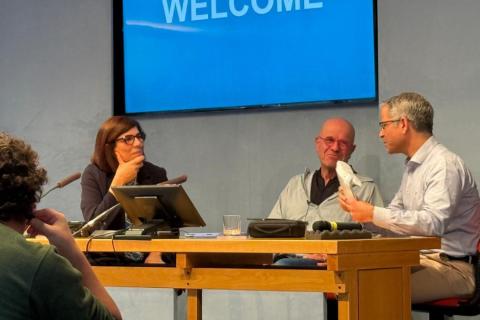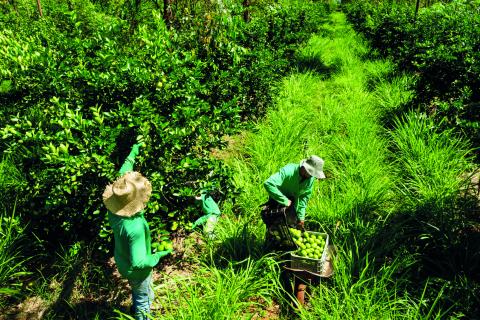
Photo by Willyambradberry | Dreamstime.com
The cover of that National Geographic was nice as usual—a picture of a small iceberg. Looking closely, though, you realized it was a floating plastic bag. It read, “18 billion pounds of plastic ends up the ocean every year. And that is just the tip of the iceberg.”
Then recently I watched Frontline’s “Plastic Wars” on March 31 showing how the plastic industry is growing like never before while the crisis of ocean pollution is growing. The last straw was a billboard in Pittsburgh saying: “Plastic Recycling is a Myth.” In fact, only 8% of the collected amount is really recycled in the United States.
After this, I wondered if all my efforts at sorting and putting plastic items in the recycling bin was worth it. But even if it is just a few bottles, along with million other people, at least a fraction of the plastic is not getting into the oceans.
Entire cities are now trying to address the problem. Los Angeles, for example, will ban several single-use items by 2023. The Board of Supervisors approved an ordinance that will require all takeaway cutlery or dishes to be compostable or recyclable. Los Angeles County is home to over 10 million people, so the positive impact of this ban could be notable.
Sheila Kuehl, a member of the Board of Supervisors, says it is “a major step forward in reducing our reliance on plastic and reducing its harm to human and marine health.” It also places a ban on the sale of expanded polystyrene foam and requires sit-down restaurants to provide guests with reusable dishes and silverware. Northern California approved a similar law. Together, these steps help the state catch up with many similar mandates already made in other states and around the world.
In March, at the Fifth United Nations Environment Assembly (UNEA-5), heads of state, ministers of environment and other representatives from UN member states endorsed a historic resolution to end plastic pollution. They expect to forge an international legally binding agreement by 2024. The resolution addresses the full lifecycle of plastic, including its production, design and disposal.
The agreement would evaluate several alternatives to plastics, the design of reusable and recyclable products and materials, and the need for more international collaboration, access to technology, capacity building, and scientific and technical cooperation.
The impacts of plastic production and pollution contribute to a triple planetary crisis: climate change, nature loss and pollution. According to UN Environmental Program (UNEP), exposure to plastics can harm human health, potentially affecting fertility, hormonal, metabolic and neurological activity. Open burning of plastics also contributes to air pollution. Also, by 2050 the greenhouse gas emissions associated with production, use and disposal would account for 15% of allowed emissions, under the goal of limiting global warming to a rise of plus 1.5 degrees Celsius. More than 80 marine and coastal species are affected by this pollution through ingestion, entanglement and other dangers.
A shift to a circular economy could reduce the volume of plastics entering oceans by over 80%. It could also reduce virgin plastic production by 55%, reducing greenhouse gas emissions by 25% and create 700,000 additional jobs—mainly in the global south.
What we can do
One thing we can all do is consume less single-use plastic.
- Replacing liquid laundry detergent for laundry sheets saves storage space, and since they are pre-measured, they can save you money too.
- There are now shampoo and conditioner bars that not only reduce plastic use, but also reduce products that pollute the water as well.
- Reusable silicone bags are alternatives to sandwich and storage bags.
- Bamboo toothbrushes with releasable heads are entering the mainstream market.
Every day, new alternatives are being provided to help us give a hand to the planet instead of choking it with plastic.












